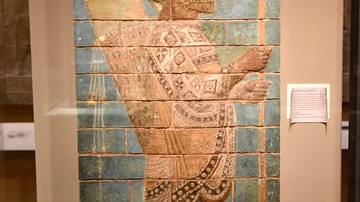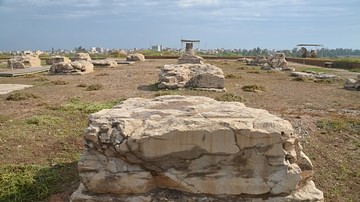Illustration
Ranks of the Louvre Museum melophores (immortal Persian guard) from the famous glazed bricks friezes found in the Apadana (Darius the Great's palace) in Susa by archeologist Marcel Dieulafoy and brought to Paris. Such polychromic friezes used to decorate the Achaemenid king's palaces in their capitals of Susa, Ecbatana and Persepolis.
There were 10,000 royal guards, any dead being replaced straight away explaining their name of Immortals. Only Persian and Median nobles could become Immortals.
They constituted sections of 1000 soldiers, armed with bows, shields, and lances, each section being commanded by officers named Chyliarchs.
According to the historian Pierre Briant who opposed the generally accepted idea derived from the Greek historians' reports that despite their rich and colorful uniforms, these soldiers were neither a parade army nor some guard units, but elite fighters that were engaged in most of the battlefields.
Pavillon Sully at the Louvre museum, Paris, France, July 2008.
Cite This Work
APA Style
dynamosquito. (2012, April 26). Ranks of Immortals. World History Encyclopedia. Retrieved from https://www.worldhistory.org/image/85/ranks-of-immortals/
Chicago Style
dynamosquito. "Ranks of Immortals." World History Encyclopedia. Last modified April 26, 2012. https://www.worldhistory.org/image/85/ranks-of-immortals/.
MLA Style
dynamosquito. "Ranks of Immortals." World History Encyclopedia. World History Encyclopedia, 26 Apr 2012. Web. 15 Apr 2025.






